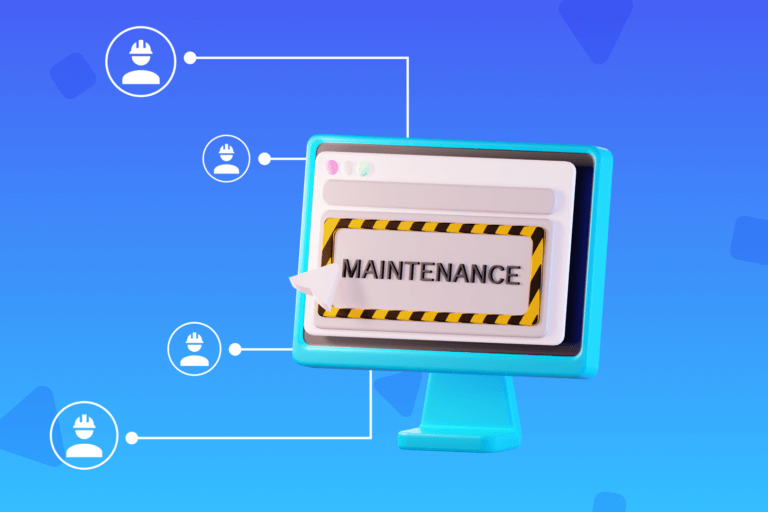Constantly verifying the status and operation of agricultural machinery and technical implements such as tractors, mowers, conveyors and harvesters, among others, is essential to ensure that agricultural production maintains its safety and efficiency.
According estimations made by Food and Agriculture Organization, FAO, by the middle of this century the world population will exceed 10 billion inhabitants.
This sustained and exponential population growth will cause, within a very short time, intense pressure on agricultural systems. Situation that translates itself into the urgent need to optimize and increase the production of safe and innocuous food.
All of this in the middle of a contingency scenario marked by uncertainty, the economic crisis, socio-political instability, the global impact of wars and climate stress.
This complex challenge demands that world food production advance decisively along a path where technological modernization is no longer just an option, but an unavoidable necessity.
This implies that technical equipment, such as tow tractors and plows, mowers, harvesters, automated irrigation devices and even solar power plants and drones, are today essential to meet this high demand from the population.
Only in this way the agri-food industry will ensure efficient development. And this objective means to optimize the use of all available materials in order to effectively balance the cost structures with the benefits obtained, both by producers and final consumers.
Objective that, in the current socio-cultural environment, also implies using ethical and sustainable production practices. In other words, by reducing the unnecessary consumption of valuable natural resources, as well as the negative impact of Agri-industrial process on the environment.
The value of organize agricultural inspection and maintenance tasks
This greater mechanization and automation require, in turn, care and maintenance strategies that ensure the continuity and operational efficiency of the machinery. Only in this way we can guarantee greater productivity and profitability of agri-food operations, without losing sight of the parallel objective of reducing their carbon footprint.
From this scenario, it is possible to establish a base list of “good practices” for the care and maintenance of agricultural machinery and equipment. Actions that, at first glance, may seem basic, but are not always properly practiced by producers.
For this reason, specialists recommend that each farm, industry or production unit organize these tasks through digital Checklists. They will help to distribute and apply with better methodological order, the respective tasks of inspection and revision of the machinery.
In addition, they allow establishing and applying adequate preventive and/or predictive maintenance plans, as well as designing audit strategies and scheduling technical visits to the field (as necessary, according to the activity carried out).
9 main precautions to be applied in agricultural machinery
From these basic principles it is possible to establish a list of basic actions that should always be included in the checklists applied to the care of agricultural equipment and machinery. Some of these actions are the following:
1. Read the instruction manual
Although we know how a machine works, it is always important to consult the instruction manual. For example, we could discover that some practices that we thought were correct are discouraged by the manufacturer, because they could cause problems or accidents.
The manuals, in addition, are the best guide to determine the exact moment in which revisions or maintenance tasks must be carried out. They also provide specific information on key indicators such as pressure, oil and operating temperature.
Therefore, the recommendation is to always have the manual at hand and read it carefully. This is the only way to prevent the improper use of the equipment, and avoid any failure or accident caused by misinformation.
2. Train operators
If the equipment is used by several people, we should not assume that everyone knows how to use it correctly. It is advisable to carry out constant courses to ensure that each of the operators has the necessary knowledge and skills to use the machinery.
Currently, most manufacturers offer this option as part of their aftermarket strategy. Although this is not an obstacle for the farmer, or owner of the team, to also organize, in a parallel and complementary manner, his own calendar of permanent training. Both for his workers and for himself.
3. Prepare periodic reports
Before planning and applying a schedule of revisions and specific maintenance actions, it is necessary to prepare an adequate history of use of each agricultural machinery. These reports should include how and when the machine was used, for how long, how was the weather (including sudden changes), as well as any abnormalities noted during operation.
It is recommended that these reports, or checklists, should be prepared by trained technical personnel, or by a trusted mechanic.
4. Carry out frequent and deep cleanings
Cleanliness is essential for farm machinery to operate safely and efficiently. Unfortunately, it is not a condition that many farmers conscientiously respect. In fact, most of the time the pay attention only to the exterior, neglecting basic actions such as changing filters, checking oil level and pressure, cleaning injector nozzles or checking the status of the electrical system, among others.
Other critical items must also be cleaned, such as faceplates, belts, shafts, joints, conveyor belts, rollers, and hinges (as applicable).
In order to apply these checklist correctly, it is also essential to have trained technical personnel, or count with the assistance of a trusted expert mechanic.
5. Lubricate constantly
Regularly changing the oil equates to preserving the life of engines and moving parts. Therefore, we must apply regular inspection and change schedule, as well as using quality products (ideally recommended by the own equipment manufacturer). This will prevent damage from dry rubbing.
In the same way, when we change the lube, it is essential to empty the entire container tank before, in order not to mix the new oil with the one already in use. This ensures that there are no impurities that could damage the operation of the engine or the lubricated parts.
It is also recommended to store bearings and spare moving parts in warehouses or rooms whose relative air humidity is less than 60%, so as not to cause damage due to corrosion.
6. Pay attention to abnormalities
In the event of any unusual symptoms, such as unexplained noises, obvious differences in operation, sudden presence of smoke, vibrations or unexpected indicator signals on the control panel, we must stop the machinery immediately and contact a specialized maintenance service.
In all these cases it is recommended to have a permanent stock of spare parts, so that any repairs do not take too long. Especially if they are simple problems or situations that we can solve quickly. Remember: having a fixed asset will always imply loss of productivity and resources.
7. Perform preventive maintenance
Even if the equipment appears to work fine, we must be sure that it does not need any repairs. Therefore, preventive maintenance is one of the most important tasks in any agricultural machinery checklist. To apply it correctly it is necessary to adjust precisely to the manufacturer’s recommendations.
It is a necessary precaution, because it will always be cheaper than a corrective repair. In addition, preventive maintenance also avoids interrupting production due to unscheduled forced stops.
8. Repair only with quality parts
Using spare parts without certified origin compromises the safety and operation of any agricultural machinery or equipment. We don´t need to buy only original brand products, but choose all those certified and guaranteed by a well-known manufacturer. The correct functioning and operation of the equipment will depend on this choice.
9. Use only authorized professionals
The same principle above applies to professional mechanics in charge of maintenance and repair. We always have to resort to trained professionals with known references. Choosing only those who are the cheapest ones can lead us to cause potential damage in the machinery and even fatal accidents.
If we opt for an authorized company, we should always prefer those recommended by the manufacturer, especially if the equipment still has a guarantee. If this is not possible, we should choose a trustworthy workshop that also has good references.
The value of technological tools in the agricultural sector
Along with applying these basic cares, it is essential to use a technological solution that allows verifying and ensuring the correct performance of agricultural machinery and equipment.
It will also be useful to have applications that control complementary variables, such as positioning and operation of the equipment in real time, fuel consumption, level of engine revolutions and route displacement, among others.
Knowing all these parameters will help anticipate problems, plan responses to contingencies, reduce negative impacts on the operation and maximize productivity.
At DataScope we have advanced technology solutions, including modern applications to create digital checklists, designed to monitor all the requirements and demands of the Agri-industrial sector according to the specific needs of each company, farm or production unit.
Through them, we will be able to carry out equipment inspection and evaluation tasks, as well as to apply audit processes and control maintenance periods.








